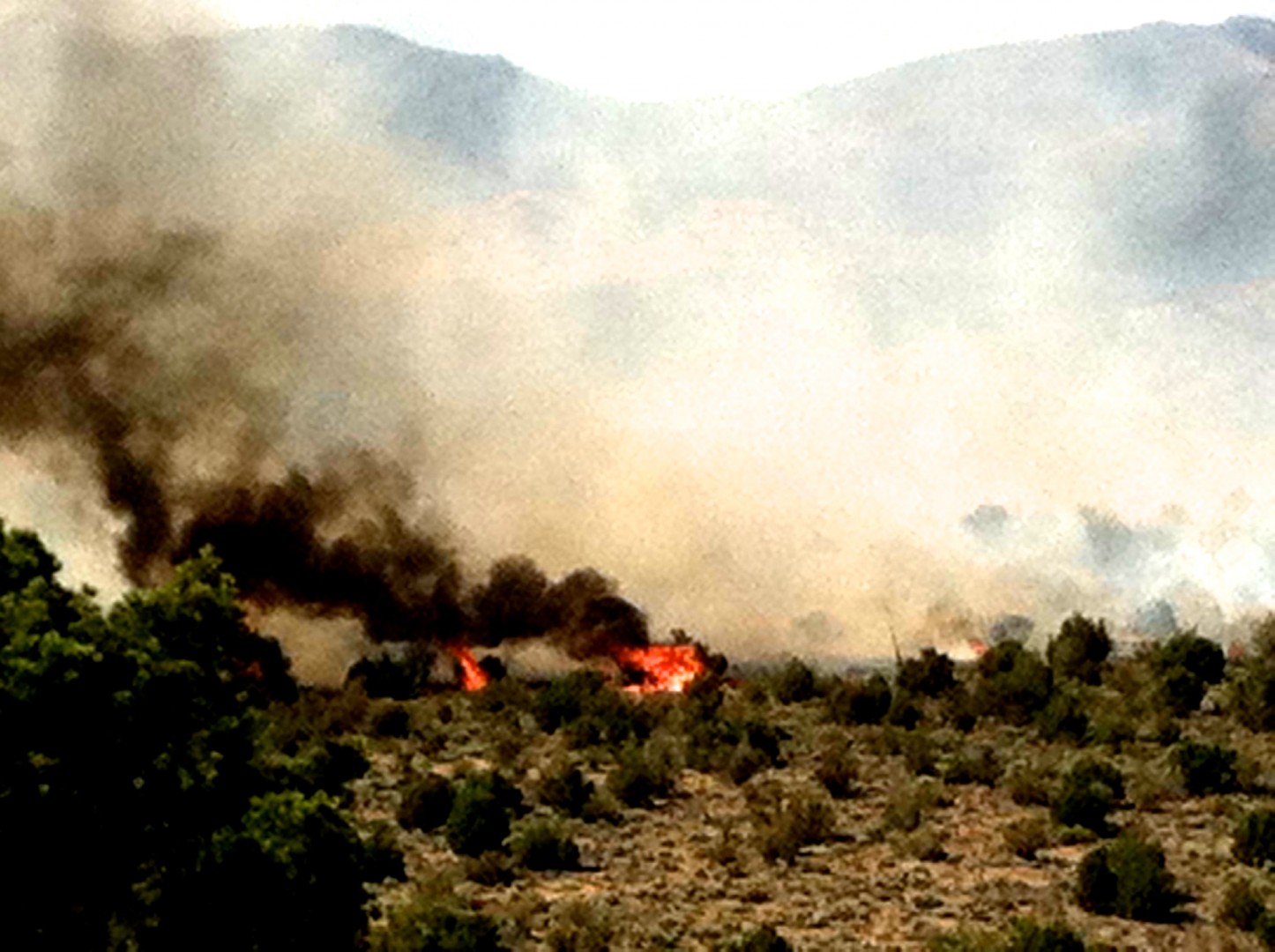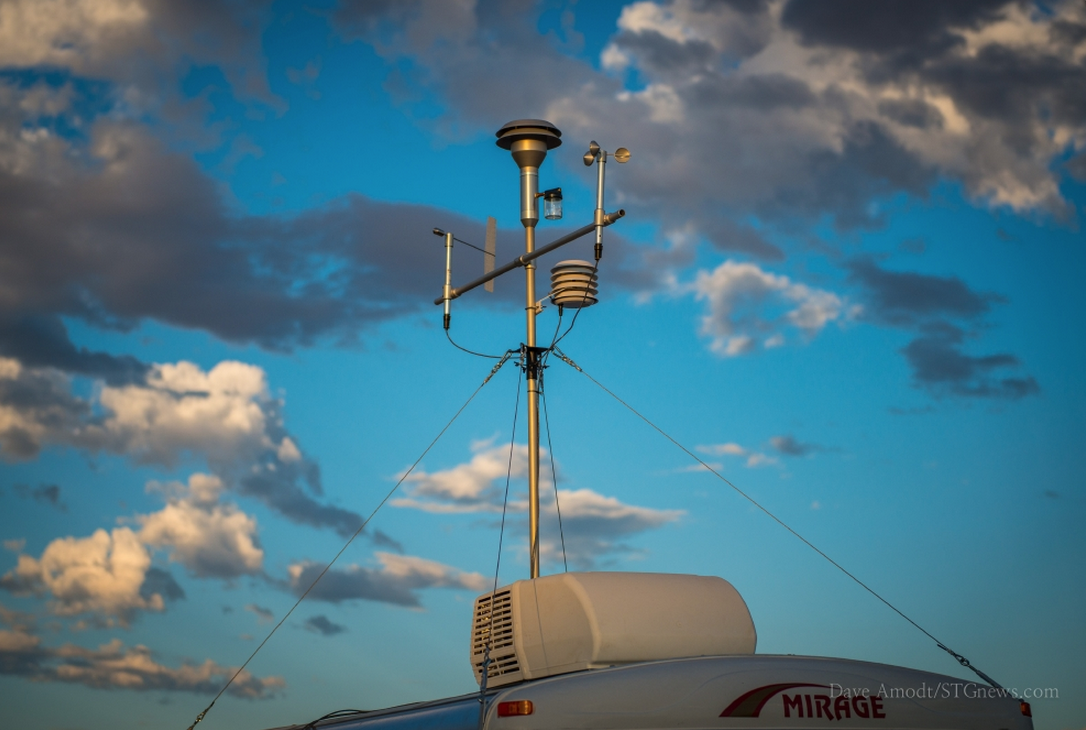
ST. GEORGE – According to officials convened at the Southern Utah Air Quality Summit Friday, the nemeses of air quality in Southern Utah include dust as the local villain and pollutants from outside areas as the invader. The summit held at the Washington City Community Center gathered local and state officials, industry professionals, scientists and community members to address these concerns and continue efforts to keep Dixie’s air clean and below pollutant levels that would mandate federal regulation.
Will the actions of Southern Utah’s residents bring us the same air pollution fate as our Wasatch Front neighbors in the north face? If we don’t take action and become more aware of our air pollution issues, we have a chance of having the same issues, Washington County Economic Development Council Director Scott Hirschi said at the summit.
State overview
The state’s air pollution issues are often overshadowed by that one issue, the inversion layer experienced on the Wasatch Front – a mucky layer of particles and gases that forms in the valleys and causes major health concerns. However, the theme at Southern Utah’s air quality summit examined a bigger picture: Because the atmosphere of the earth has global cycles, the earth’s atmosphere is connected over great distances; therefore, air from northern Utah, Las Vegas, California and even Asia, actually affects Southern Utah.
The issue of air quality is very complicated and complex, Alan Matheson, environmental advisor to Gov. Herbert, said. By way of example, he cited data that shows many of Utah’s rural areas and national parks have air quality that exceeds ozone standards despite their low levels of industry, traffic, and people. One of the reasons for this, Matheson said, is because of particle transport. Particles are being transported and blown in from other areas such as Vegas and California. Pollution plans need to be developed on this premise, he said.

Statewide, the actual origins of the pollutants have been studied and categorized, Matheson said, attributing 55 percent to cars and trucks, 35 percent to area sources such as small businesses and homes, and 11 percent to industrial sources.
But environmental factors can also be contributors and even collaborators with human causes. For example, dust. Dust can be a natural occurrence, but it can also be stirred by human activity.
Colleen Delaney, an environmental scientist and coordinator for Utah’s Ozone and Regional Haze State Implementation Plan, has spent 20 years learning about ozone pollutants. In particular, Delaney has been studying patterns of pollution in Southern Utah, helping to monitor measuring stations across the region.
Some of the studies Delaney mentioned show that pollution is effected by human emissions, through industry and vehicle emissions for example, but also effected through many natural factors such as lightning strikes and fires. So, setting up strategies to combat air pollution is difficult, she said. However, regional analysts are studying and implementing a myriad of different types of strategies.
Particulate matter
Particulate matter is formed by a mixture of solid and liquid microscopic particles in the air, classified as either PM10 for “coarse particles” or PM2.5 for “fine particles.” The most significant pollutant problem in Southern Utah is PM10, which is basically dust.

In northern Utah, the biggest problem is PM2.5, which is basically caused by smoke and chemical emissions. PM2.5 causes public health problems because the particles are so small they can go directly into the bloodstream. Once in your bloodstream, they can have serious impacts on your brain function and your cardiovascular system. Southern Utah has low levels of PM2.5 but not nearly the levels that the Wasatch Front has during inversions.
PM10 has been known to cause pneumonia, asthma and valley fever. Southern Utah has a significantly higher incident rate (number per 1,000 citizens) of valley fever than northern Utah, Southwest Utah Public Health Department’s environmental health scientist, Robert Beers, said. One study showed Southern Utah with an incident rate of 24 valley fever cases per year, Beers said, compared to the rest of the state at typically one to two cases. “This is a unique problem in Washington County,” he said, and the main problem the Southern Utah Air Quality Task Force is tackling.
Action plans

One of the programs already in place is air quality monitoring throughout the region. Earlier this year, a new full-time monitoring machine purchased by the City of St. George was activated. It is managed by Bill Swensen, the city’s air quality program project manager. He hopes to see the city purchase another monitoring machine to help monitor the rising PM10 levels around St. George, Swensen said, especially in areas where there is lots of new development like Little Valley.
Another plan is being spearheaded by Levi Roberts, community planner and mobility manager for Southern Utah’s Five County Association of Governments. Roberts plan aims at growing public transit and shared-ride programs in Southern Utah. See a PDF of Roberts’ 2013 plan here: 2013 Southwest Utah Coordinated Human Service Public Transportation Plan.
The City of St. George public works department is focusing on developing new roads and using state-of-the-art designs on new overpasses to minimize the amount of miles drivers have to travel. The department, among other things, studies driving patterns and builds new roads to open up areas that are somewhat isolated because of existing road designs that require unnecessary travel distances.
The good news for Southern Utah is that its air is much cleaner than that of its northern neighbors, although concerns do exist. As Matheson said at the summit, if Southern Utah acts now it can beat the air quality problem before it begins. Southern Utah can manage its air pollution and in doing so can avoid all the regulations that go with not meeting federal air pollution standards.
Related posts
- Southern Utah Air Quality Task Force hosts Clean Air Summit
- Just breathe: Indoor plants, their impact on your health
- Past meets future, challenges Council candidates in debate
- Southern Utah’s trucking industry on ‘Heavy-Duty’ regulations
- City activates new $45,000 pollution monitor; dust issues
- Clear the Air Challenge; more participants, less vehicle emissions
- Southwest Utah Public Health Department: Air quality advisory
- Clean Across America & Back 2012 CNG Road Trip’ to pass through Southern Utah
- US Forest service: Fewer trees dying nationwide
- Utah Air Quality Summit 2012 convenes in Washington
- St. George area gypsum mines bring viable industry, address local concerns
- County Commission approves gypsum mine despite protests
- St. George air quality is clean; mayors aim to keep it that way, Clear the Air Challenge
New from STGnews.com
St. George News App for Android®
St. George News App for iPhone®
Email: [email protected]
Twitter: @STGnews
Copyright St. George News, SaintGeorgeUtah.com LLC, 2013, all rights reserved.
